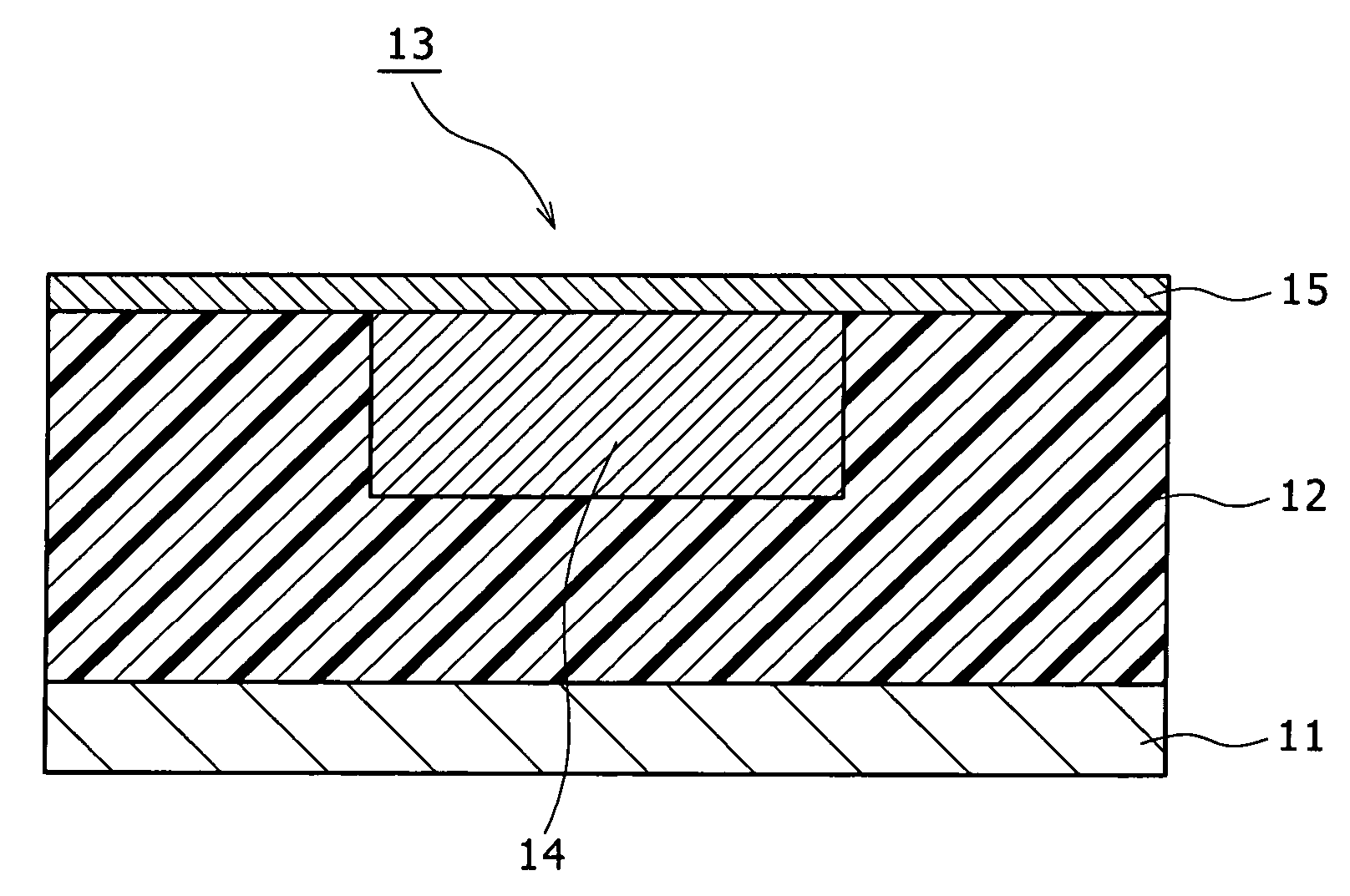Method of fabricating a semiconductor device using plasma to form an insulating film
a technology of insulating film and semiconductor device, which is applied in the direction of coating, chemical vapor deposition coating, metallic material coating process, etc., can solve the problems of affecting the production efficiency of semiconductor devices, the inability to control the introduction ratio of chsub>3 /sub>group, and the damage or exfoliation of interlayer insulating film caused by holes, so as to prevent damage to another film or exfoliation of film by f, the capacitance between wiring
- Summary
- Abstract
- Description
- Claims
- Application Information
AI Technical Summary
Benefits of technology
Problems solved by technology
Method used
Image
Examples
modification 1
[0037]While, in the first embodiment described above, film-forming gas which contains OMCTS is used, different film-forming gas which contains, for example, tetramethyl cyclotetra siloxane (TMCTS) represented by the formula (2) given below may be used as the film-forming gas which has a ring structure of Si—O bonds. The TMCTS has a four-membered ring structure of Si—O bonds and is configured such that it has a CH3 group and H bonded to Si atoms which form the four-membered ring structure and further has Si—C bonds and Si—H bonds. Here, the Si—O bond has binding energy higher than those of the Si—C bond and the Si—H bond.
[0038]
[0039]Also in this instance, film-forming gas which contains, for example, TMCTS and O2 is used and the energy of pulse plasma discharge is controlled so that the four-membered ring structure of Si—O bonds is maintained while Si—C bonds are partly dissociated to form the interlayer insulating film 12. In this instance, since the Si—H bond has binding energy sub...
second embodiment
[0043]In the second embodiment of the present invention, film-forming gas different from that used in the first embodiment is used to form an interlayer insulating film 12 having a four-membered ring structure (cyclotetra siloxane) of Si—O bonds on a substrate 11. The film formation when the interlayer insulating film 12 is formed on the substrate 11 in the present embodiment can be performed using film-forming gas which contains silane (Si)-containing gas composed of, for example, trimethyl silane (3MS) represented by the formula (3) given below and O2 gas.
[0044]
[0045]Here, the formation of the interlayer insulating film 12 is performed by a plasma CVD method wherein the energy is controlled so that Si—C bonds in the 3MS are partly dissociated and Si and O2 react with each other in a vapor phase to form a four-member ring structure of Si—O bonds which are stable in structure and besides the formed four-member ring structure is maintained.
[0046]Consequently, since the interlayer ins...
modification 2
[0054]Further, such Si—O-containing gas formed from tetraethoxy silane (TEOS) as represented by the formula (4) may be used. Here, the TEOS includes four ethoxy (C2H5O) groups bonded to Si, and the Si—O bond has binding energy higher than that of the C—O bond.
[0055]
[0056]In this instance, TEOS gas and O2 are used as film-forming gas to form a four-membered ring structure of Si—O bonds in a vapor phase, and an interlayer insulating film 12 is formed by plasma discharge wherein the energy is controlled so that the ring structure of Si—O bonds is maintained while the C—O bonds are partly dissociated. Consequently, the interlayer insulating film 12 which has the four-membered ring structure of Si—O bonds is formed, and C-containing groups in the form of the ethoxy (C2H5O) group are introduced into the interlayer insulating film 12 at an introduction ratio with which a film strength can be maintained. Accordingly, effects similar to those of the second embodiment can be exhibited.
[0057]I...
PUM
| Property | Measurement | Unit |
|---|---|---|
| power | aaaaa | aaaaa |
| dielectric constant | aaaaa | aaaaa |
| dielectric constant | aaaaa | aaaaa |
Abstract
Description
Claims
Application Information
 Login to View More
Login to View More - R&D
- Intellectual Property
- Life Sciences
- Materials
- Tech Scout
- Unparalleled Data Quality
- Higher Quality Content
- 60% Fewer Hallucinations
Browse by: Latest US Patents, China's latest patents, Technical Efficacy Thesaurus, Application Domain, Technology Topic, Popular Technical Reports.
© 2025 PatSnap. All rights reserved.Legal|Privacy policy|Modern Slavery Act Transparency Statement|Sitemap|About US| Contact US: help@patsnap.com



